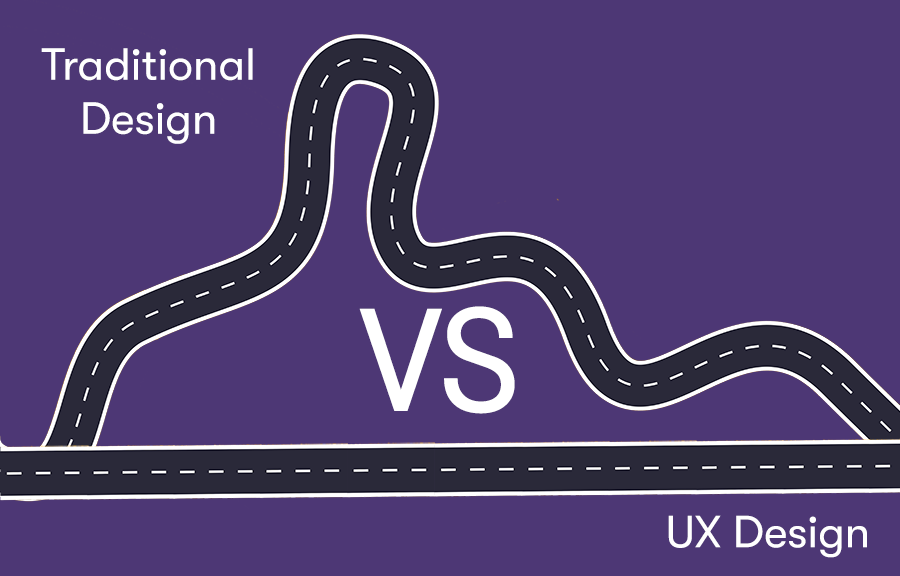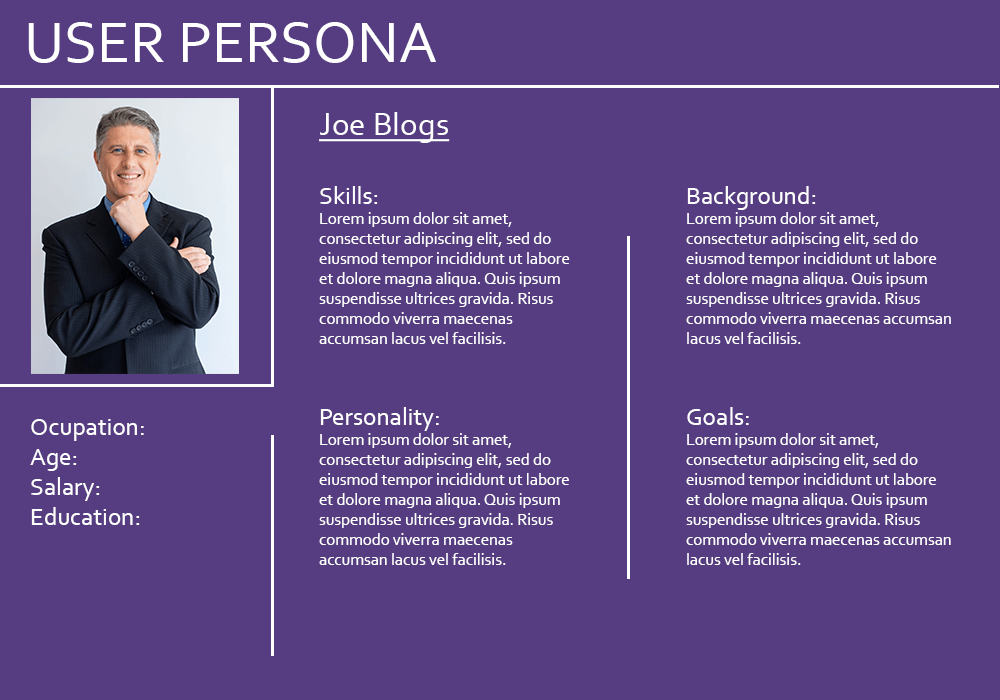What Is User Experience (UX) Design?
User experience (UX) has become an increasingly important factor in the success of digital products and services. From websites to mobile apps, the way that users interact with these products has a major impact on their overall satisfaction and likelihood to return. However, UX is far from a simple concept. It involves a wide range of factors that can be difficult to navigate and optimise.
In this blog, we will explore the complexities of UX and why it is necessary for any digital product or service to use UX in development. From the psychology of user behaviour to the intricacies of design, we will dive deep into the world of UX to uncover why it is so essential in today's digital landscape.
- What Is UX?
- The Value Of UX Design
- The Difference Between UX, CX & UI
- What Is Visual Design?
- What Is Website UX?
- How To Conduct User Research
- Understanding UX Pain Points
- How To Produce Personas
- What Is UX Testing?
- What Is Accessibility?
- Nielsens Heuristics
- UX Designer Roles & Responsibilities
- Useful UX Tools
- How To Become A UX Designer
- Conclusion
What Is UX?
User experience (UX) encompasses all aspects of the end-user's interaction with the company, its services, and its products.
UX encompasses a wide range of factors that contribute to the overall experience, including:
- Design of the product.
- Ease of use.
- Clarity of the interface.
- Speed of the product.
- Accessibility of the product.
- Overall satisfaction that the user feels while using it.
UX design involves the process of designing and optimising products and services to provide the best possible user experience. It is a multidisciplinary field that draws on a range of skills and expertise, including psychology, design, engineering, and data analysis.
The Value Of UX Design
There are several benefits that a well-designed UX process can provide to organisations which include:
Improved user satisfaction: A positive user experience can lead to increased satisfaction and engagement with a product or service, which can increase customer loyalty and retention.
Increased efficiency and productivity: A well designed UX process can make it easier and more efficient for users to accomplish their goals, which can increase productivity and reduce frustration.
Competitive advantage: A superior user experience can differentiate your organisation's products or services from competitors, leading to increased market share and revenue.
Reduced development costs: By designing with users in mind, your organisations can reduce the need for costly redesigns and iterations that can result from poor UX design.
Better user insights: UX research can provide your organisation with valuable insights into user behaviours, preferences, and pain points, which can inform product development and marketing strategies.
UX can help your organisation create products and services that are more effective, efficient, and appealing to your users, which leads to improved organisational outcomes such as lower expenditure and increased sales.
Examples Of How Good UX Design Has Helped Organisations
No business is unaffected by UX. UX can either make or break a product. Two notable examples of this are Apple and Google.
Apple was not the first to invent the smartphone, but they were the first to make it simple and easy to use with great UX.
It is the same story with Google, they were not the first search engine, but they made a great user experience which has turned them into the biggest search engine with a 90% market share.
How Effective UX Affects Sales
Many large organisations spend more resources on UX than they do on marketing products. The theory behind this is to make the user experience of a product or service excellent so the product or service sells itself with little marketing help.
With a solid UX process, many businesses see higher customer retention. A good UX creates a good brand image and higher sales. Spending resources on marketing does accelerate sales but is always a temporary solution, your product should be able to sell itself.
Where Can UX Be Implemented?
UX is the user’s experience of a product or service from start to finish. A user's journey may start in a shop or website, and end when their interaction with the product or service terminates. Any step in the customer’s journey can be reviewed for UX, from purchasing, using the product and disposing of the product. It is important to note that the individual buying may not be the end user of the product or service.
Steve Jobs and his Chief Design Officer Walter Isaacson spent hours just on the packaging of an iPhone. Isaacson said “I love the process of unpacking something. You design a ritual of unpacking to make the product feel special. Packaging can be theatre, it can create a story.”
Service’s UX can be continually improved with incremental updates. Through continued user research and addressing pain points your organisation can produce the best user experience that is accessible for all.
The Difference Between UX, CX & UI
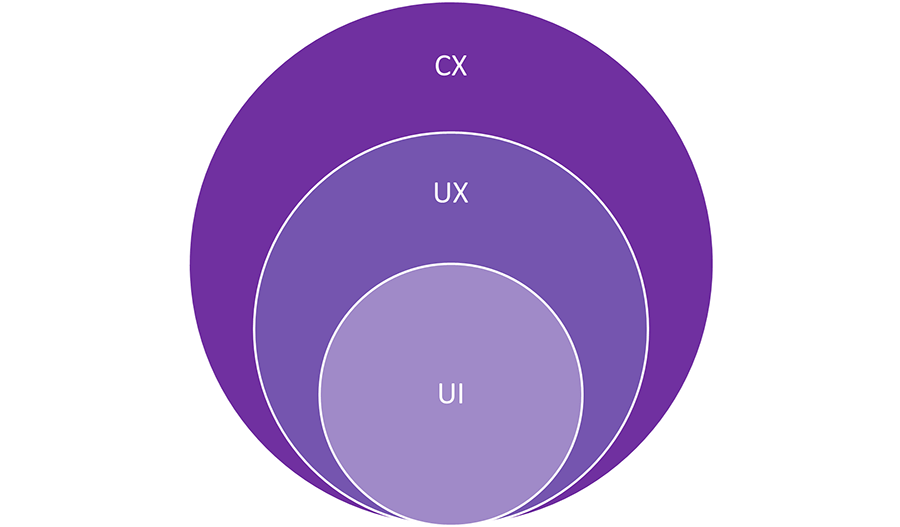
UX, CX, and UI are all related to the user's experience with a product or service, but they are distinct concepts that each focus on different aspects of the user's journey. Here's a brief overview of each:
Customer Experience (CX)
CX is a broader concept that encompasses the entire experience that a customer has with a company, from initial awareness through post-purchase support. This includes all touchpoints that a customer has with a company, including marketing, sales, customer service, and more. CX design aims to optimise the customer experience to create loyal and satisfied customers.
User Experience (UX)
UX refers to the overall experience that a user has while interacting with a product or service. This includes everything from the ease of use, to the visual design, to the content, to the speed and performance of the product. UX design aims to optimise the user experience to meet the needs and expectations of the user.
User Interface (UI)
UI specifically refers to the visual design and layout of a product or service. This includes elements such as typography, colour, icons, and navigation. UI design aims to create an interface that is aesthetically pleasing and easy to use.
In summary, CX focuses on the broader customer experience with a company, UX focuses on the user's experience with a product or service, and UI specifically addresses the visual design and layout of a product or service. While these concepts are distinct, they are all important components of creating an effective and appealing experience.
What Is Visual Design?
Visual design refers to the use of visual elements such as colour, typography, imagery, and layout to create an aesthetically pleasing and effective design. It is a critical component of the overall user experience, as it can greatly impact how users perceive and interact with a product or service.
Visual design is used to enhance the messaging and content of a product or service. For example, visual design can be used to create a cohesive brand identity using consistent colours, typography, and imagery. It can also be used to guide users through a website or app by creating a clear visual hierarchy that prioritises the most important information.
In addition to being aesthetically pleasing, effective visual design should also be functional and usable. This means considering factors such as accessibility, responsiveness, and user preferences when making design decisions.
What Is PARC?
PARC stands for Proximity, Alignment, Repetition, and Contrast. PARC is a guideline for UX designers to create a visually pleasing interface.
Proximity
Proximity is the grouping of elements on a webpage, when we see items close together, we assume that they are connected or related and group them. A common mistake within this concept is that many designers do not leave enough negative space for users to differentiate the groups of elements.
Alignment
Alignment on an interface is important due to our brains enjoying organised information. If an interface is not aligned our subconscious will divert energy to find some alignment on the page.
Repetition
Repetition is unifying elements across an interface. Creating consistent elements across an interface. For example, the same typeface across a website including the same size and colour.
Contrast
Contrast makes an interface attractive and interesting to look at. Contrast is achieved, for example, making a header way larger than normal and a different colour. Harsh or not enough contrast may lead to poor UX due to eyesores or hard to read text.
What Is Website UX?
Creating a good website UX is important for every organisation. It involves a process that includes many steps and continual improvement. Here are some of the key steps involved in designing a good website UX:
Conduct user research: The first step in creating good website UX is to understand the needs, goals, and behaviours of the website's target users. This can involve conducting user research through methods such as surveys, interviews, and usability testing.
Define the user journey: Once you have a good understanding of the user's needs and goals, you can define the user journey, which outlines the steps that the user takes to complete a task on the website. This can help you identify pain points and areas for improvement in the user experience.
Create a site map: A site map is a visual representation of the website's structure and hierarchy. It should be designed to make it easy for users to navigate the website and find the information they need.
Design wireframes/prototypes: Wireframes are rough sketches of the website's layout and content. They can help you refine the user journey and ensure that the website's structure and content are well-organised and easy to use.
Develop a visual design: Once the wireframes are finalised, tested, and reviewed, you can create a visual design that reflects the website's brand and identity, including colour, typography, imagery, and other visual elements.
Build and test the website: The final step is to build the website and conduct usability testing to ensure that the user experience is effective and user-friendly. This can involve testing the website on a variety of devices and screen sizes to ensure that it is optimised for all users.
Overall, the key to creating a good website UX is to focus on the user's needs and goals throughout the design and development process. By following these steps, you can create a website that is easy to use, engaging, and effective at meeting the user's needs.
How To Conduct User Research
Conducting user research is an important step in creating a good UX design. Here are some steps to conduct UX user research:
Define Your Research Questions
Start by defining your research questions, which should be focused on understanding the user's needs, behaviours, and pain points. The research questions should be aligned with the goals of the product or service you are designing.
Identify Your Target Users
Identify the target users for your product or service, and recruit participants who fit the target user profile. You can use various methods to recruit participants, such as social media, email campaigns, or online communities such as UserZoom.
Choose Your Research Method
There are several research methods you can use, such as conducting interviews, focus groups, site visits, or conducting surveys. Choose the method that best fits your research questions:
Surveys/Questionnaires
Surveys or questionnaires are easy to set up and can accommodate large numbers of users. Depending on the product or service you can automate this process. Although there is no way of knowing what questions to ask to cover all bases of the user experience (you don’t know what you don’t know).
Focus Groups
Focus groups can yield information on group dynamics, but the data collected can be manipulated due to social conventions of being in a group.
Interviews
Interviews can generate large amounts of quality data and is easy to run. It is important that the interviewer is not biased and must not ask leading questions which would skew the data you have collected.
Site Visits
By seeing the user interact with the product or service in the correct environment, you can see the user experience in real-time. Being in the same environment users may act differently due to being observed. It can be hard to take notes fast enough and may miss points raised by the user. It is best to either record or film the user if permission is granted. This process can be costly and time inducive depending on your product or service.
Conduct The Research
Once you have identified your target users and chosen your research method, you can conduct the research.
Analyse The Data
After collecting the data, you can analyse it to identify patterns and insights. This can involve using tools such as Excel or specialised UX research software.
Use The Insights To Improve Your Design
Once you have analysed the data, you can use the insights to make improvements to your design. This might involve changing the layout, adding new features, or making other adjustments based on the user's needs and behaviours.
Conducting UX user research is an iterative process that involves continuous refinement and improvement based on the insights gained from the research. By taking a user-centred approach and understanding the needs and behaviours of your target users, you can create a UX design that is effective, user-friendly, and aligned with the goals of your product or service.
Understanding UX Pain Points
By observing and analysing how a user interacts with a product, developers can adapt and adjust to improve the UX. If the user encounters a complication or obstacle, how do the users overcome this or react to it? Firstly, can we remove the complication in the first place? If not, how do we implement the solution for the users to easily understand?
For example:
An optician's website has a high bounce rate on the homepage/landing page. The reason for this is that visually impaired users cannot read the website clearly – Pain point.
The user's solution for this is to manually zoom in, creating the website harder to use or going back to google to find a website that is easier to read.
By creating a large button above the fold in a prominent position saying something like “Having trouble reading our website?” This can take them to a page with a large text size, or slider so the user can manually change the text size across the entire website with clear instructions on how to do this – Solution.
Just like with many other aspects of life, there is a range of user experience pain points. No product or service is perfect for everyone. All UX pain points cost, whether it is costing a user time, trust, or money. Remedying users pain points would vastly improve users satisfaction with your interface.
How To Produce Personas
What Is A Persona?
A persona is a fictional character that represents a group of users with similar needs, behaviours, and characteristics.
Typically, a persona includes demographic information on the user group, such as age, gender, and occupation, as well as information about the user's goals, needs, and pain points. Personas may also include information about the user's behaviours and habits, as well as their attitudes and preferences.
Why Are Personas Important?
Creating personas for your product is important for UX. Helping designers create empathy and understanding of the user's needs. A UX persona should be close to your ideal user, with their thoughts, feelings, needs, goals, and background outlined.
There should be enough personas to cover most of your market. Two important personas are the user (UX) and the buyer (CX) of the product.
Another thing to consider is a negative persona, this persona is to differentiate them from your users. By outlying their behaviours, background, and other aspects, you can eliminate their views on UX and from marketing campaigns.
How To Develop Personas
Develop Personas
Use the data gathered from the research to create personas that represent your target audience. include a name, picture, age, occupation, goals, needs, and pain points.
Refine The Personas
Once you have created your personas, refine them based on feedback from stakeholders or user testing. You may need to adjust the characteristics, behaviours, or goals of the personas or create an additional persona to better reflect your target audience.
Use The Personas In The Design Process
Incorporate the personas into the design process by using them as a reference when making design decisions. This can help ensure that the designs aligned with the needs and goals of your target audience.
Update The Personas
As you gather more data or conduct additional research, update the personas to reflect any new insights or changes in your target audience.
What Is UX Testing?
UX testing is the process of evaluating the user experience of a product or service through testing and observation. The goal of UX testing is to identify issues or pain points that users may encounter while interacting with the product or service, and to gather feedback that can be used to improve the user experience.
UX testing can be conducted using a variety of methods, including user testing, surveys, and analytics. Testing can be conducted throughout the development stages from wireframes to the live product or service. Here are a few examples of UX testing:
Tree Testing
Tree testing lets you test your menu structure against the user’s logic of how to find elements without a search bar. It is important that users can easily navigate through your interface to complete their intended goal.
Wireframes & Prototypes

Wireframes are low fidelity used early in the development process to create a basic structure before content is added. By creating a wireframe, you can test customer journeys and the usability of a product. By finding UX issues early in the development phase, it is simple to adapt and change the design of the product to resolve the issue. Successful wireframes save time and money during the development stage by testing with the user early.
Once a wireframe has been approved, it is time to make a prototype of the product. A prototype is a simulation of the final product to test the UX. Prototyping is high fidelity testing. In this development stage, it is important to test against users to find pain points and resolve them. The higher the fidelity of the prototype the larger the expense, but also more accurate testing.
Usability
Usability testing or user testing involves a facilitator giving a participant a task and observing how the user behaves to complete the task. If the participant agrees, the process is normally recorded for a UX review later. Recording the participant and the participant’s screen or product is the best practice to yield the most data about the UX of the product.
The tasks must be realistic, and what the user would normally perform, the tasks can be specific or open-ended for the participant to work out. The participant should be a realistic user of the product in real life to generate the most accurate data on the UX.
Often the participant is asked by the facilitator to speak aloud their thoughts, feelings, and actions during the usability test. Once the tests are over the facilitator will pass on their report to the developer to make changes. Once the changes have been applied, usability test the product again to produce the best possible UX.
Split Testing Or A/B Testing
Split testing or A/B testing can be used to test UX usability. Split testing is testing the same interface against each other with minor variations to see which one is most effective. Multivariate testing is taking A/B testing to another level, by changing 2 aspects of an interface at a time and testing 4 variations at once. Split testing can be effective to test minor elements, although it takes massive amounts of users to get valuable data.
Measuring Usability
Once testing is complete it is time to evaluate the results.
Measuring usability in UX can be defined with a score, by recording the success rate, time taken, error rate and users' satisfaction of a task. During testing, you can create a usability score of the product or service as a whole or break it down to give various parts scores to better identify issues.
Testing and comparing competitors' interfaces and score can determine if you are doing well in certain areas or not. Testing should be an iterative process; the usability scores should give you an indication if the changes helped the users pain points or if more work is needed to improve.
What Is Accessibility?
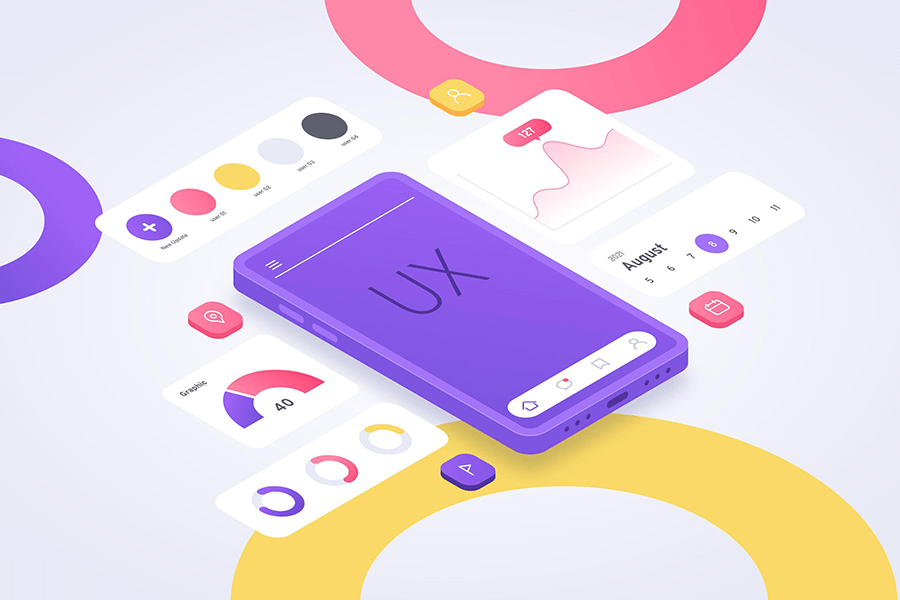
Accessibility ensures that everyone can use a product or service no matter what physical or cognitive challenges they have.
Web Accessibility Initiative (WAI)
Creating a system with accessibility for all. Inclusive design in UX. Not only researching UX and personas there are outliers. These users might include auditory, cognitive, neurological, physical, speech, and visual challenges. People with disabilities often have non-standard devices and browsers.
The Web Content Accessibility Guidelines Working Group produces guidelines, techniques and other supporting documents relating to the accessibility of Web content. Such as any information you may find on a Web site: text, images, forms, sound, video, and colour.
ISO 9241
ISO 9241 is human-computer interaction. It encompasses all interactions between humans and computers, this includes UX. UX professionals can tie their own work to an official standard. One Key part is ISO 9241-11 This is the Ergonomics of human-system interaction, in other words, usability.
Nielsens Heuristics
Heuristics is general principles or general rules of thumb of a user interface. There are many different approaches to defining UX. Other general principle examples include Ben Shneiderman’s eight ‘golden rules’ of user interface design, and Susan Weinschenk and Dean Barker’s heuristics. But the most widely used is Nielsen’s Usability Heuristics from 1993. Nielsens 10 heuristics are:
Visibility Of System Status
The user should understand what the system is doing, is it waiting for input? Processing? Loading? Or at the end of a process? There should be visual representation of each of these steps. For example, exporting a document from a system. There will be a visual change in the export button when clicked. A pop, loading bar, or % of export will show the user the progress of the system. Once it is completed there will be a visual representation like a green tick or the window will close.
Match Between System & The Real World
A real-world approach of how we would do something should feel natural and empathic. The system language should be appropriate to the user, things to consider on this is the background of the user, the education level and geographic. Using layman's language might work generally but if the system is designed for professionals in a specific field, the language used should represent the user.
User Control & Freedom
The user should not feel locked into a system or interface. The user can control a system to change features, leave the system and other elements. Giving the user control and freedom should not compromise the system or circumvent security. An example of user control is to pause an eLearning course and resume when the user decides to, depending on the parameters of the terms of service.
Consistency & Standards
Consider the user's previous experiences and apply them to your system, for example, everyone who uses a Windows PC knows CTRL+C is copy and CTRL+V is paste. Keeping the interface consistent throughout the system helps UX and usability. Users unconsciously look for continuity to predict where elements are logically placed in a system.
Help Users Recognise, Diagnose, And Recover From Errors
An error has occurred, how do we instruct the user to recover from the issue? For example, a user has put a letter character in the telephone number field in a form. Putting a pop up after the user has clicked submit to say that the telephone number field is incorrect, outlining the issue in red for the user to easily resolve and continue the process.
Error Prevention
Preventing errors occurring creates better UX than an error occurring and the user resolving them. An example of this is preventing users from typing letter characters in a telephone number field and preventing the user from typing in more than 11 characters.
Recognition Rather Than Recall
Helping users prepopulate fields lets the user complete tasks faster, improving user satisfaction and UX. For example, “remember me” functionality when logging in for the first time, so you do not have to do it again. Finding users’ full addresses from their postcode. Having smart systems that can pull data from other sources helps users save time by not searching for information.
Flexibility & Efficiency Of Use
How much effort does a user exhaust to complete a task? Businesses should aim for it to take the least amount of effort. Reducing unneeded steps for users to complete tasks improves UX. For example, an online supermarket recognises that the user purchases milk every time, the supermarket puts milk on the homepage, so the user does not have to search for the product. Ergo reducing steps, saving time, and improving UX.
Aesthetic & Minimalist Design
Remove elements that distract the user like adverts or auto-playing videos. A minimalistic design that is aesthetically pleasing increases UX. If the design of the system is unappealing to the user, this will negatively impact UX.
Help & Documentation
Help and documentation for a user to interact with your system are important, not all users will understand how to use it from the start. A step-by-step guide, video, or visual clues can help the user explore the system. This should be implemented not only for the first time an individual uses the system but also if changes are made or new features are added.
UX Designer Roles & Responsibilities
The roles and responsibilities of a UX designer can vary from organisation to organisation and the specific project, but there are some common responsibilities of a UX designer such as; design strategy, interaction design, continuous improvement, and collaboration.
User research: Conducting research to understand the needs and behaviours of users, and using that research to inform design decisions.
Design strategy: Developing a design strategy that aligns with the organisation's goals and objectives, and creating design solutions that meet those goals.
Wireframing and prototyping: Creating wireframes and prototypes to test and iterate design solutions, and to communicate those solutions to stakeholders.
Visual design: Developing visual design concepts that align with the overall design strategy, and creating design assets that can be used by developers.
Interaction design: Designing interactions and user flows that are intuitive and user-friendly, and that align with the overall design strategy.
Usability testing: Conducting usability testing to evaluate the effectiveness and usability of design solutions, and using feedback to make improvements.
Collaboration: Collaborating with other designers, developers, and stakeholders to ensure that design solutions meet the needs of the organisation and its users.
Continuous improvement: Continuously evaluating and improving design solutions based on user feedback and business goals.
A UX designer is responsible for creating design solutions that are effective, user-friendly, and that are aligned with the needs of the organisation and its users. This involves a combination of research, strategy, design, and collaboration, as well as a commitment to continuous improvement and iteration.
Some common skills of a UX designer are:
- Design software: A UX designer should be proficient in design software, such as Sketch, Adobe Creative Suite, Figma, or other design software commonly used in the industry.
- Communication: A UX designer should be able to communicate design solutions to stakeholders and developers effectively and be able to collaborate effectively with other members of the design team.
- Critical thinking: A UX designer should be able to analyse and interpret complex information and make design decisions that align with the needs of the organisation and its users.
- Problem-solving: A UX designer should be able to identify design problems and create effective solutions to those problems.
Useful UX Tools
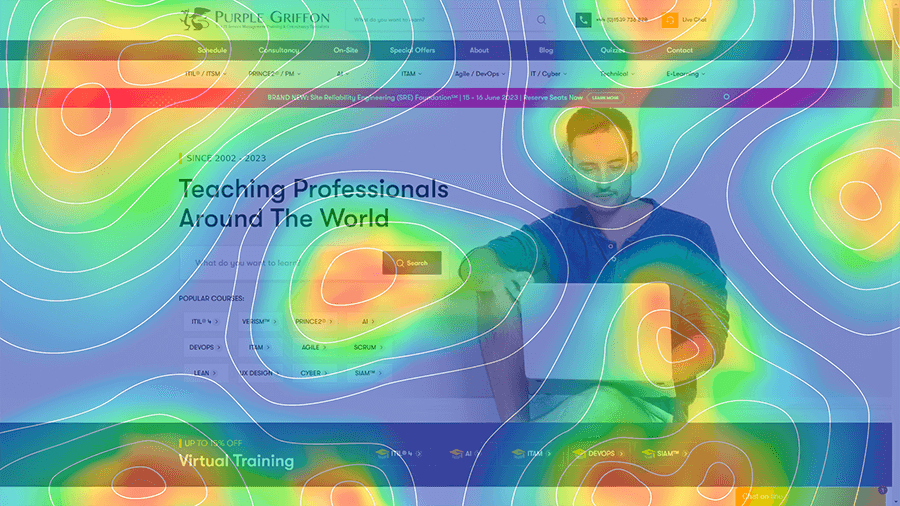
Now you know the premise of UX, how do you implement these processes into your business? There are many helpful software programs to help you through every UX process:
Interviews Tools
User Interviews
User Interviews is an interview coordination platform. Automated it lets users schedule themselves, your business can set automatic incentives. for example, get £50 gift card by testing our product/service and telling us your feedback. Target the right participants using customised demographics parameters. Run the interview through any external software and use User Interviews as logistics.
Dovetail
Dovetail is an interview analysis software. Transcribing interviews, tagging interview transcripts for review and later use. Tagging interviews to easily find them in the research repository. Usability testing of products by tagging and correlating data, affinity mapping segments of interviews, users, and data. Share user insights with colleagues.
Survey Tools
Hotjar
Hotjar is a product research tool with many features. Forms that are customisable with questions, radio buttons, multiple-choice and text boxes. Save every custom question in a question bank for later use. Available on desktops, tablets, and phones. Live feedback on your website with happy to sad faces, text box and an element select so users can give feedback on specific parts of your website.
Google forms
Google forms is a survey tool. Send forms via email or embed onto a website. Templates available or custom survey questions with different elements for the user to complete. Import questions from previously made forms.
Creating A Persona Tools
Google Analytics
Google Analytics is a web analytics service. Track users to see how they use your website, see bounce rate, popular pages, and many other features. See where your users have come from, what country, operating system, and what device.
Pulsar
Pulsar is a social media trends platform. Through social media gather data on your users to further your persona research, through cluster analysis based on affinities, behaviours, and demographics.
UXpressia
UXpressia is a persona and customer journey software. Create highly detailed personas under different projects. Features like social media accounts, market size, background, and many other aspects. Compare and differentiate between different personas to find common results. Split persona users and persona buyers to help with UX and CX.
Product Testing Tools
Testlio
Testlio is a software testing facility. Test usability, app testing, payments, and many other parts to ensure the best user experience on product release.
Bugwolf
Bugwolf is a software testing facility, with testers that do not know your product they can test without being biased or know how the product should operate. Once they find a usability issue or bug, they will screen record and share with your relevant team to resolve the issue.
Wireframe Tools
Balsamiq
Balsamiq is a low-fidelity wireframe tool to help with product designing and development. Faster than using a sketchbook. Can share with other developers or UX designers. Drag and drop elements onto your sample page. Community generated elements help make designs quicker to develop.
Prototyping Tools
Figma
Figma is a prototyping software. Share your designs and get feedback tagged to different elements to help with the UX of the design. Works on all platforms. Plugins to make the prototype closer to the finished product and quicker to develop.
Marvel
Marvel is a prototyping software. Share your prototype with your target audience to get UX feedback from your ideal user. The developer handoff tool gives developers pixel sizes, colours, and alignments to help with the coding process.
Heat Maps Tools
Lucky Orange
Lucky orange is marketing software. Dynamic heatmaps let you know what elements users are frequently clicking on your website and how they are using it. Segment where users are coming from for example Google search, social media, email campaign. Review heatmaps from all devices to see usability and customer journeys.
Session Recording Tools
SiteRecording
SiteRecording is a visitor recording tool for websites. Record actions, movements and clicks from actual users on your website. Filter user sessions based on their device, location, and other criteria.
Tree Testing Tools
Maze
Maze allows you to build a tree test hat your users can have input on to see if your Information Architecture needs restructuring. To be able to determine findability and customer expectations when it comes to your product or service.
How To Become A UX Designer
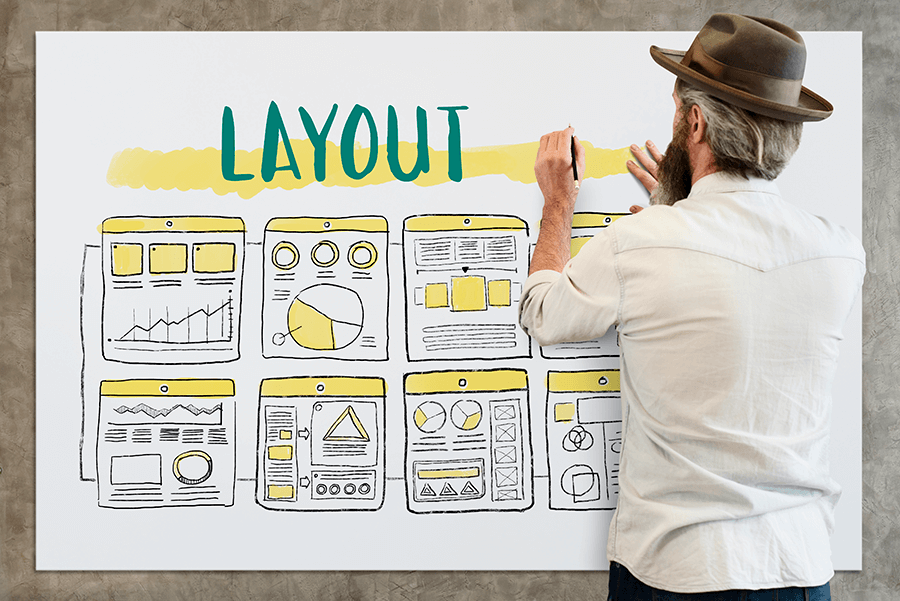
UX design is a rapidly growing field, Glassdoor ranked UX Designer as the 11th best job to have in 2022 with a very high job satisfaction rating. With more organisations investing into online interfaces such as apps, websites, and software. If you are interested in becoming a UX designer or want to improve your knowledgebase, here are a few tips:
Learn The Basics UX Design
Start by learning the fundamentals of UX design through online courses, workshops, quizzes, and books. This will give you a foundation of knowledge to build on as you gain experience.
Build A Portfolio
Create a portfolio of design projects that showcase your skills and abilities. This can be done through personal projects or by contributing to open-source projects.
Network With Other Designers
Attend meetups, conferences, or other events where you can meet other UX designers and learn from their experiences. This can also be a way to find job opportunities.
Gain Experience
Look for opportunities to gain experience as a UX designer, such as internships, freelance work, or contract positions. This will help you build your skills and create a portfolio of work.
Practice User Research
Learn how to conduct user research and usability testing, as this is a key part of the UX design process. Practice by conducting research on your own design projects or by participating in research studies.
Learn Design Software
Become proficient in design software commonly used in the industry, such as Sketch, Adobe Creative Suite, or Figma.
Continue Learning
UX design is a field that is constantly evolving, so it's important to continue learning and staying up to date with the latest design trends and techniques.
Consider Getting Certified
Here at Purple Griffon we offer a 3 day BCS Foundation Certificate In User Experience course. While not required, certifications can help demonstrate your expertise and credibility as a UX designer.
Becoming a UX designer takes time, practice, and dedication, but with the right skills and experience, you can build a rewarding career in this field.
Conclusion
Ultimately, UX design is a crucial component in building successful and sustainable digital products and services. By prioritising the needs and experiences of users, companies can create products that are intuitive, engaging, and ultimately drive business success.
If you enjoyed this article, please consider sharing it with your colleagues who may also be interested in learning more about UX design. We believe that everyone can benefit from having a better understanding of UX design principles.
Thank you for reading, and we hope this blog has provided you with valuable insights into the world of UX design.



